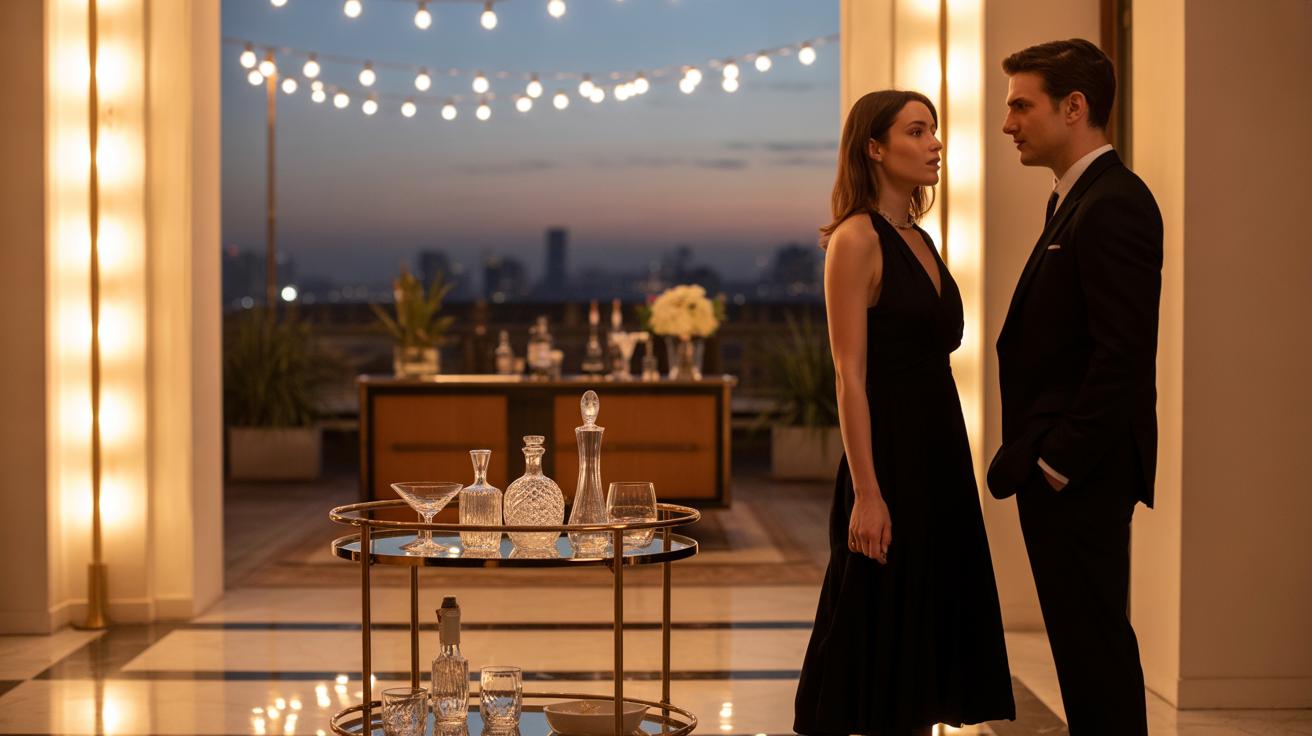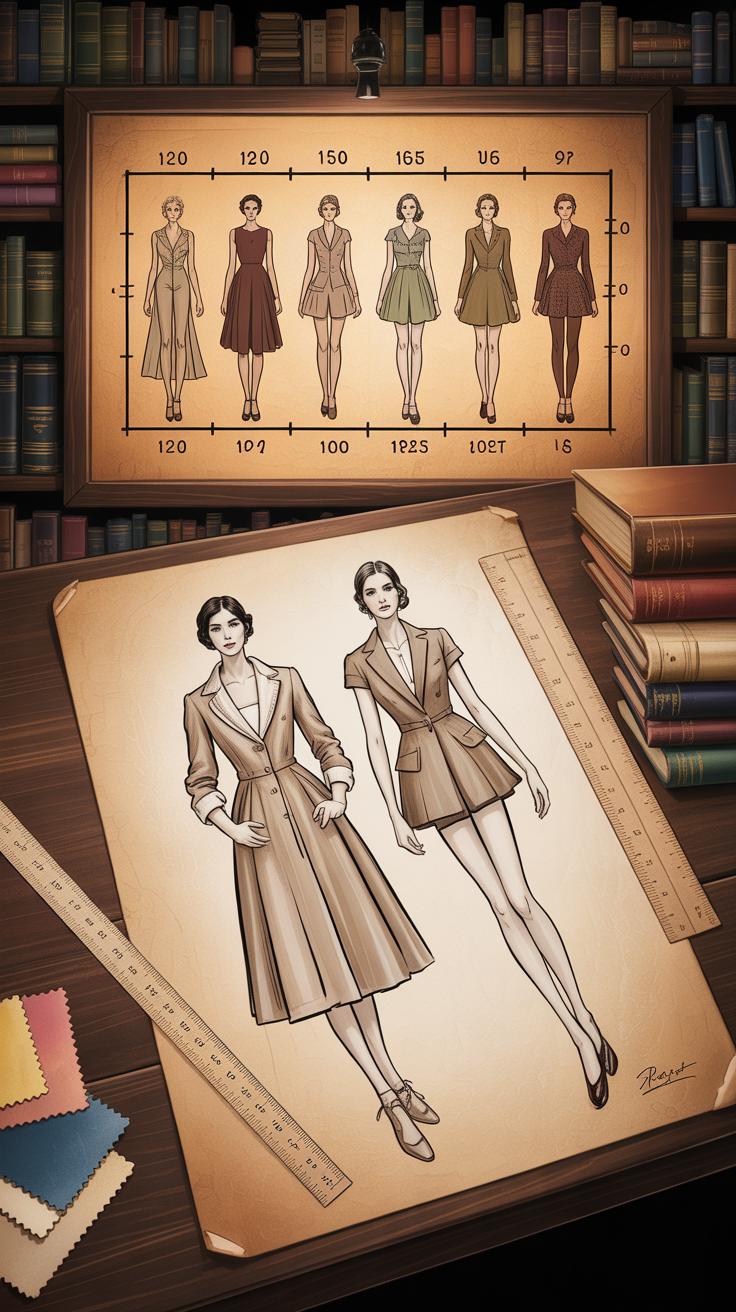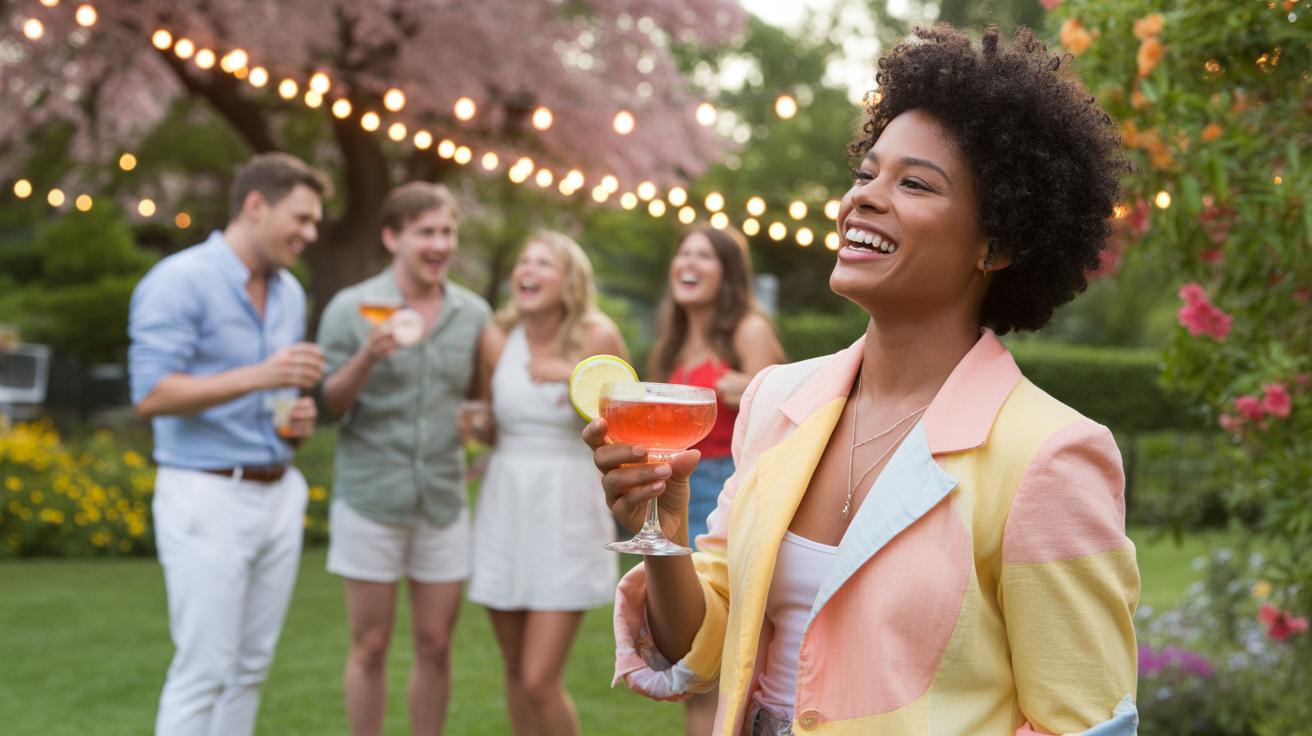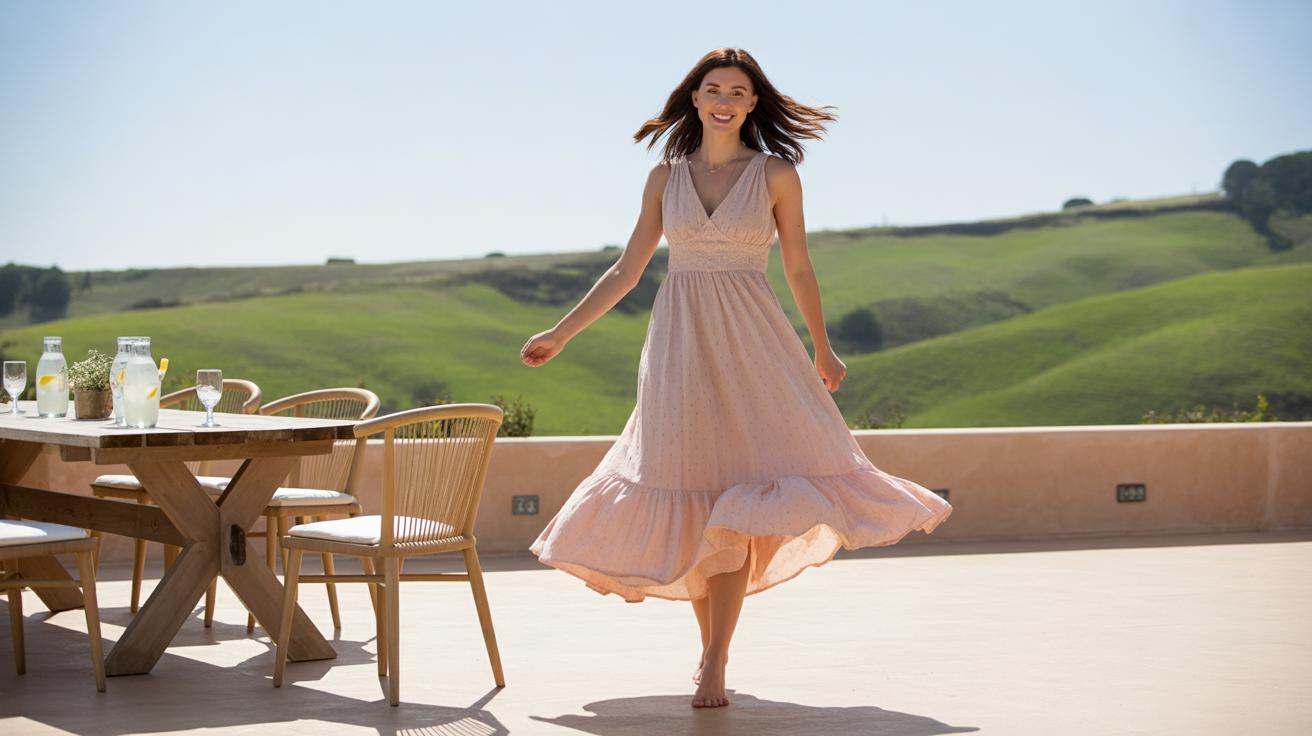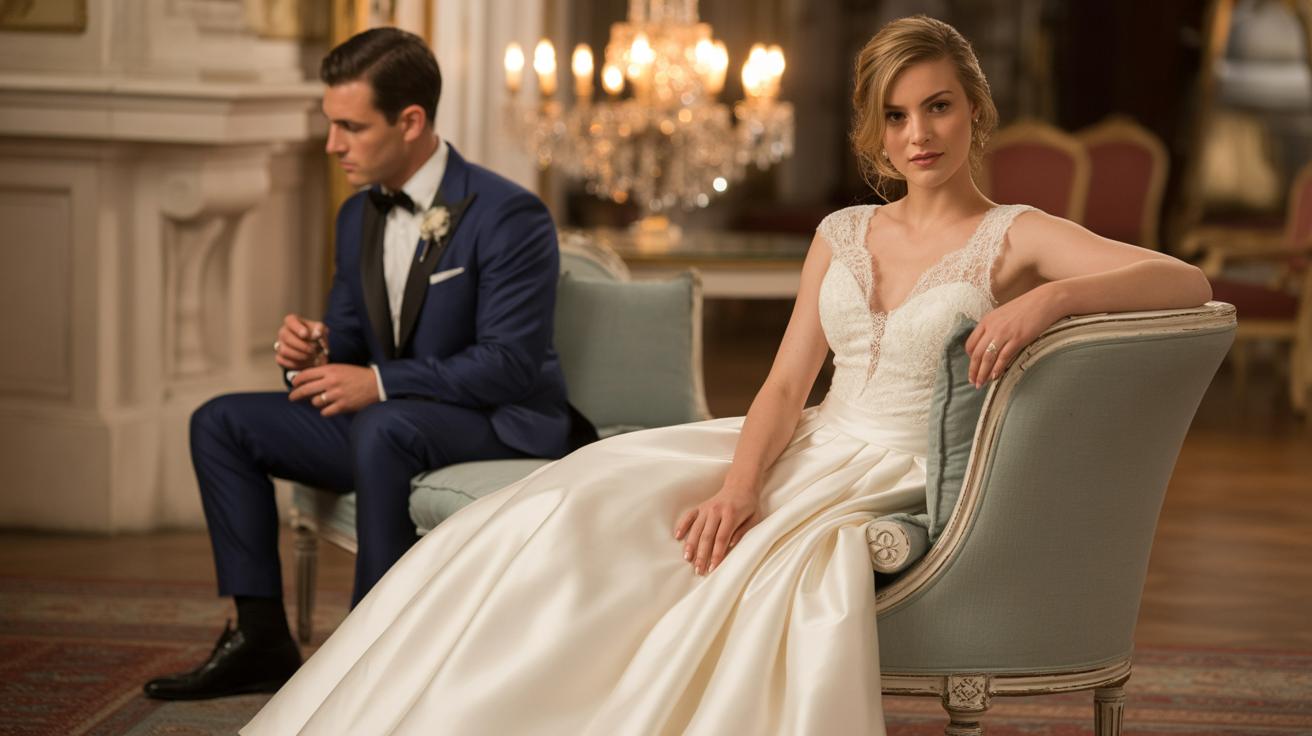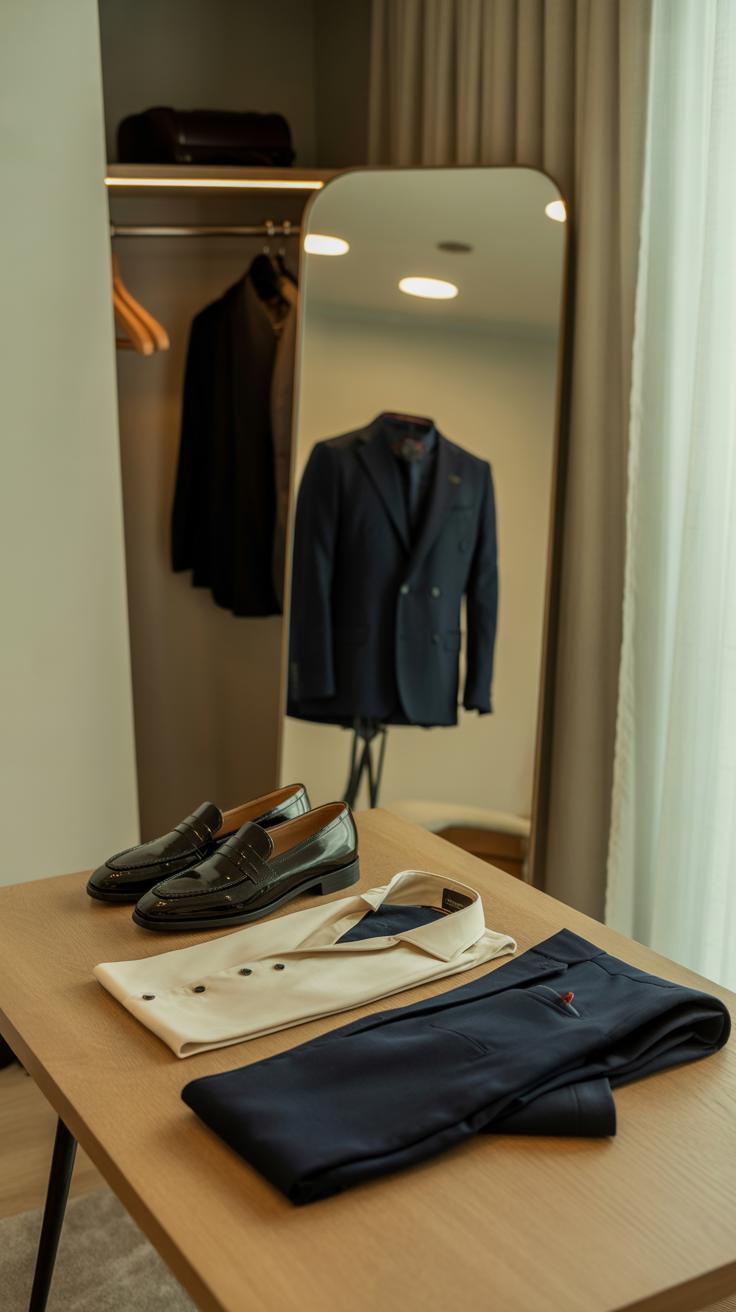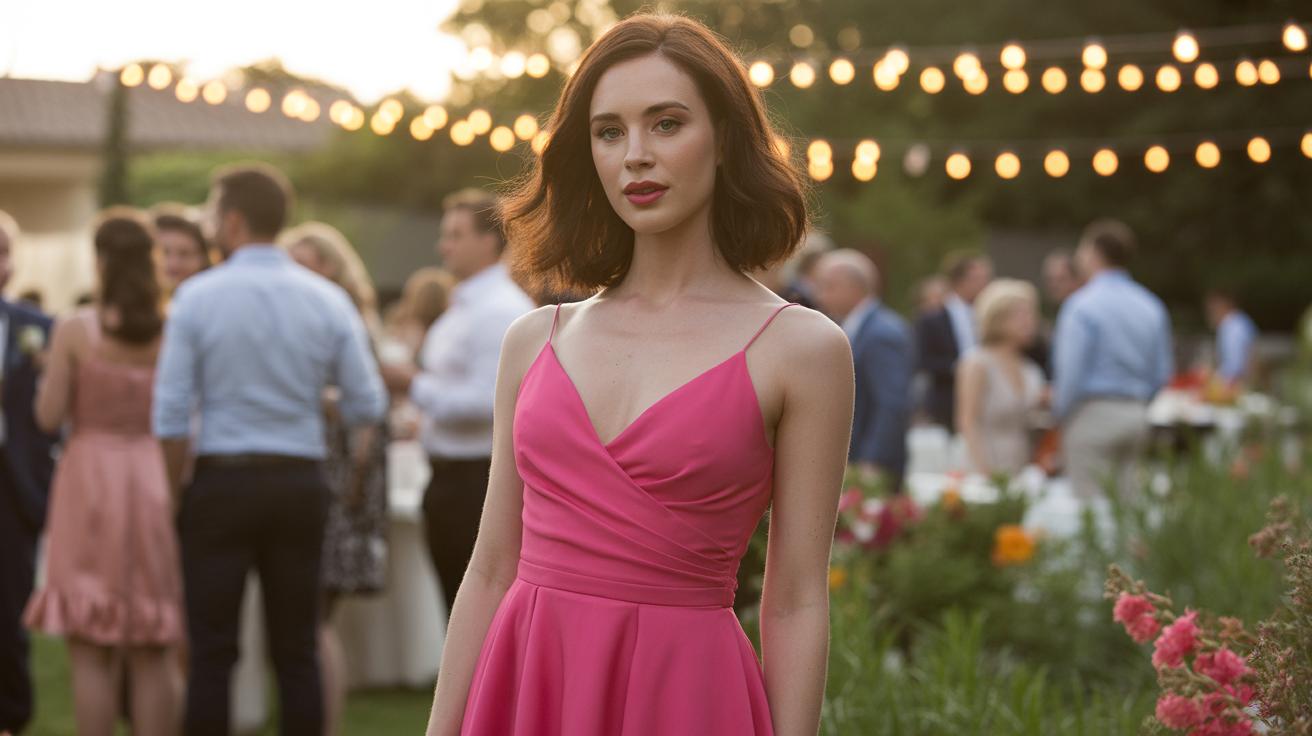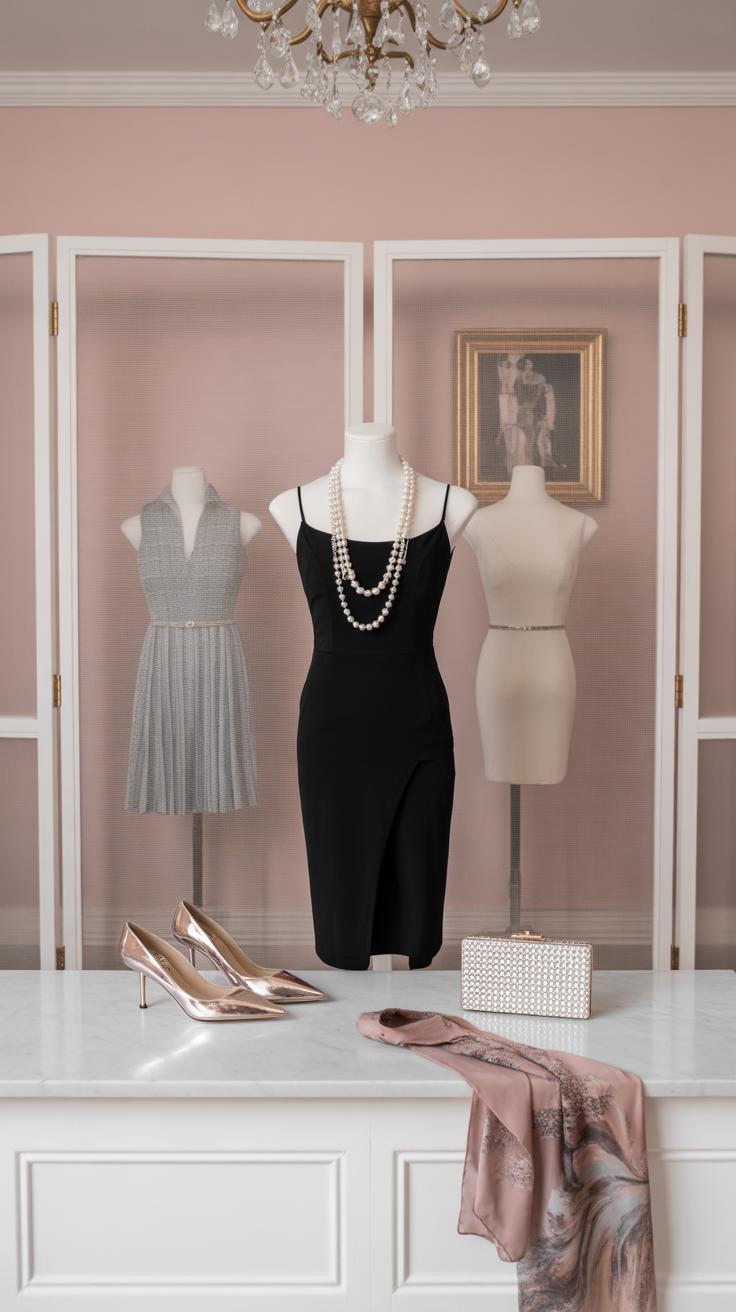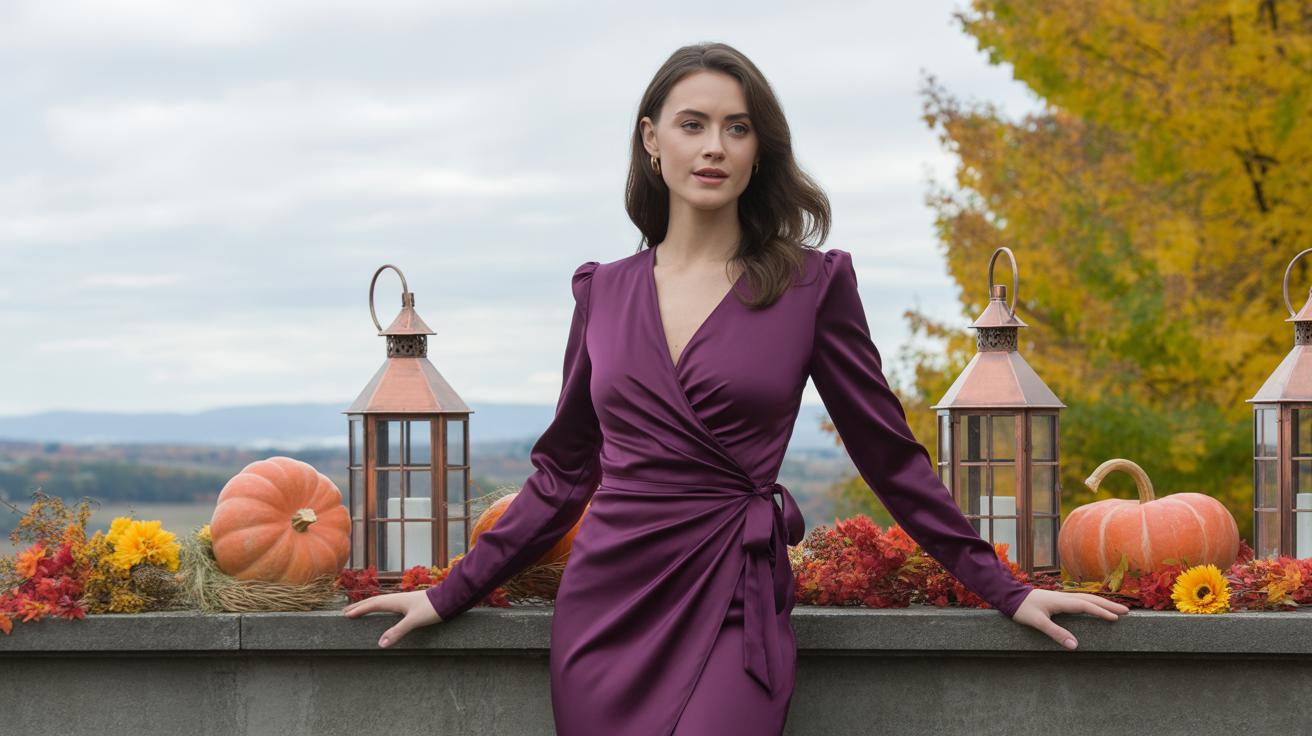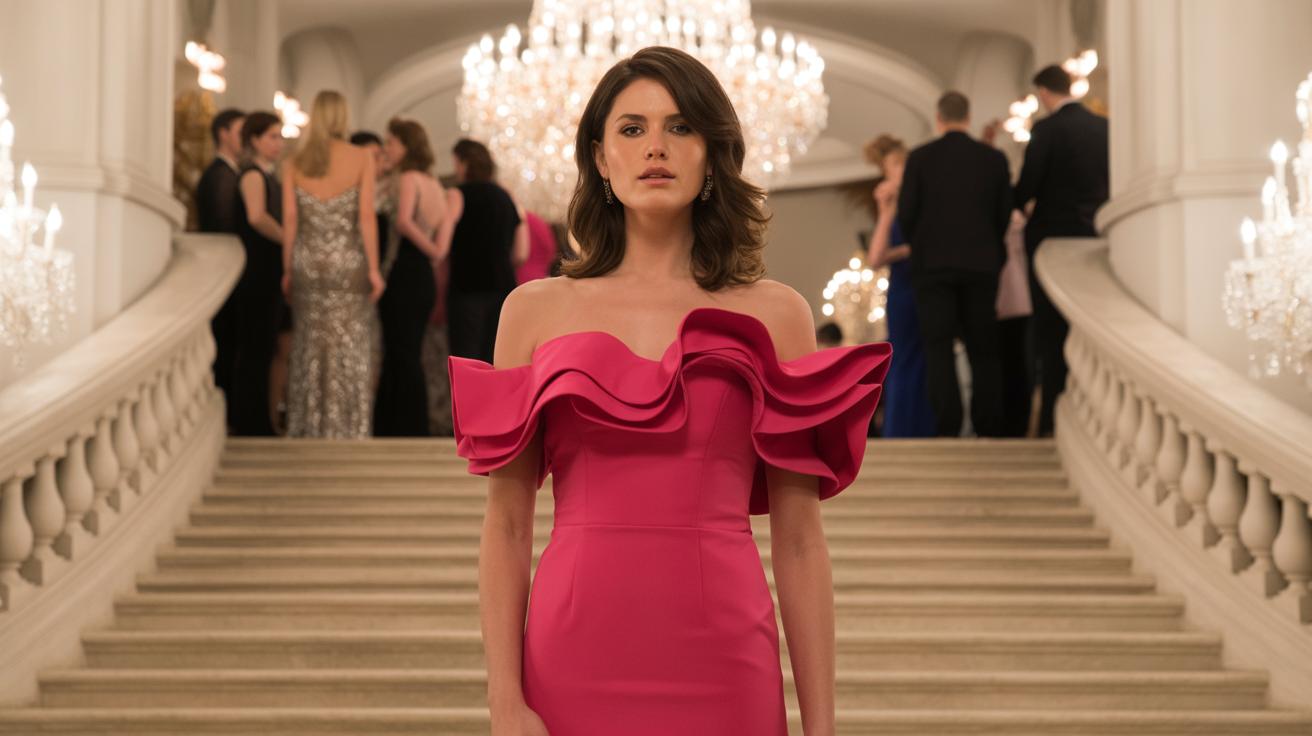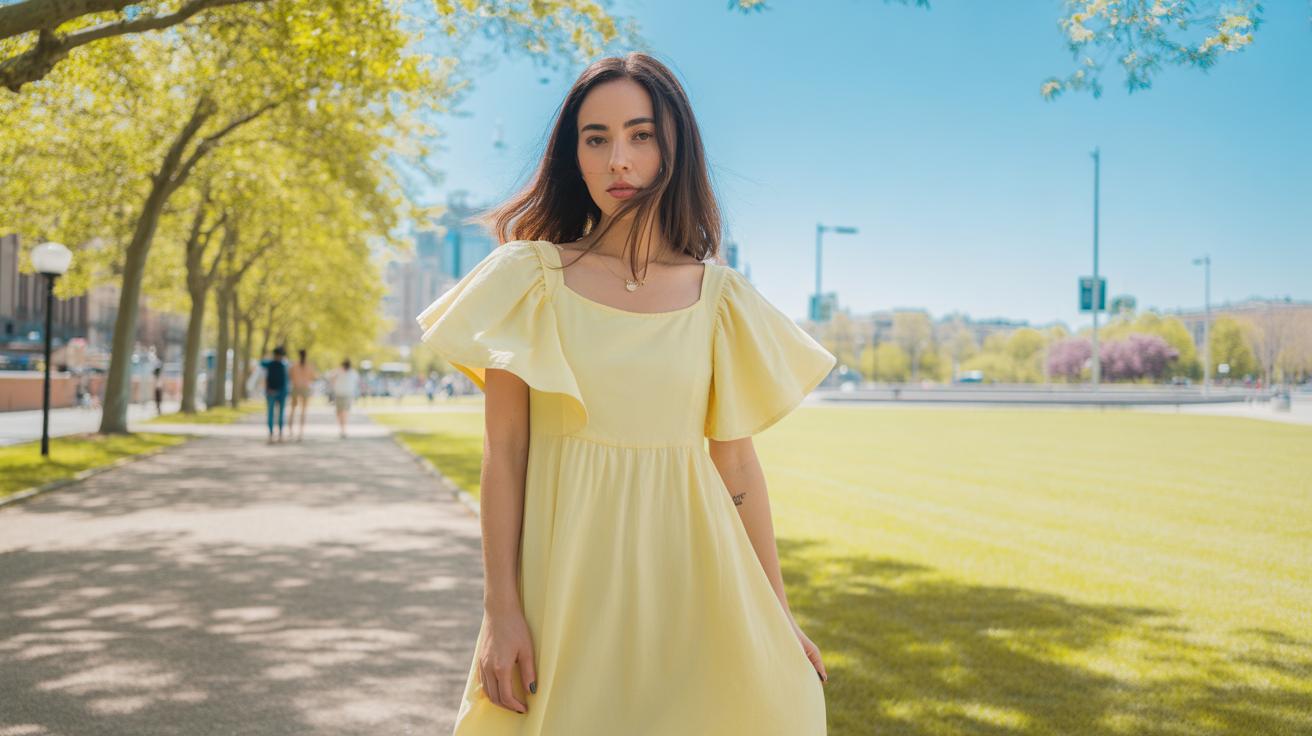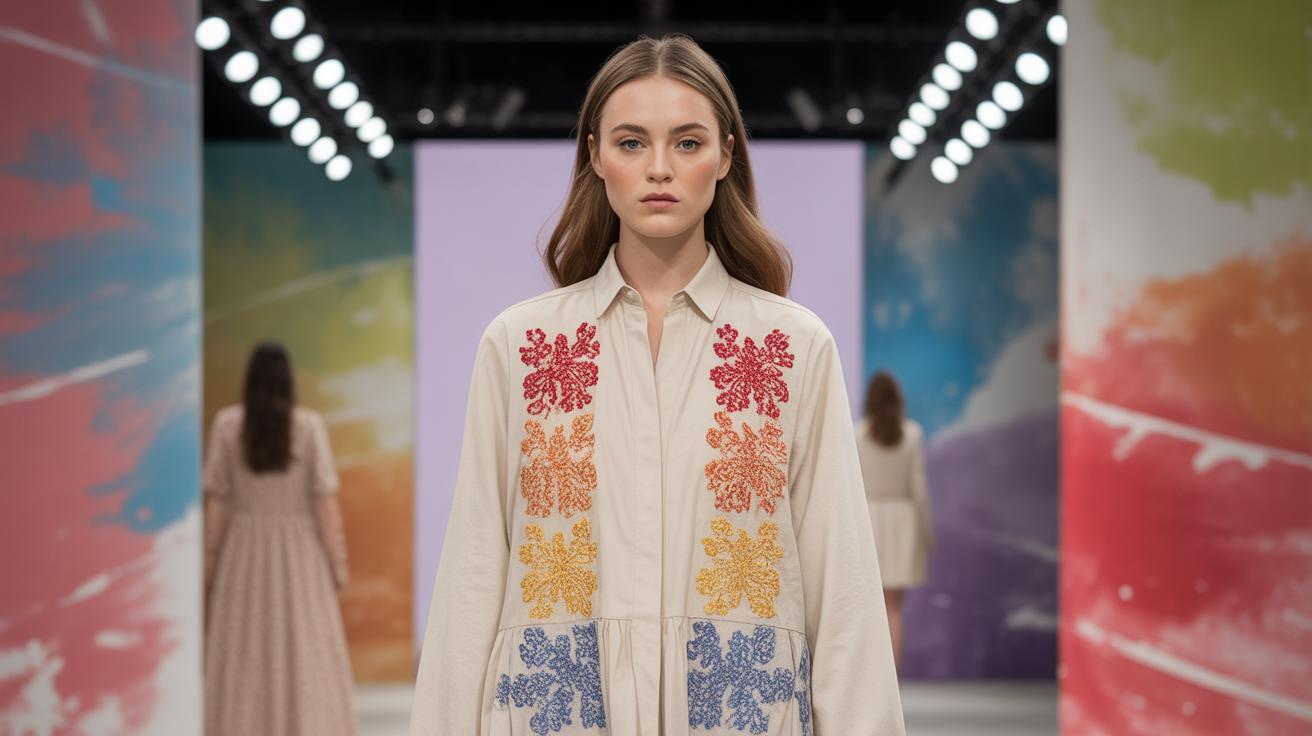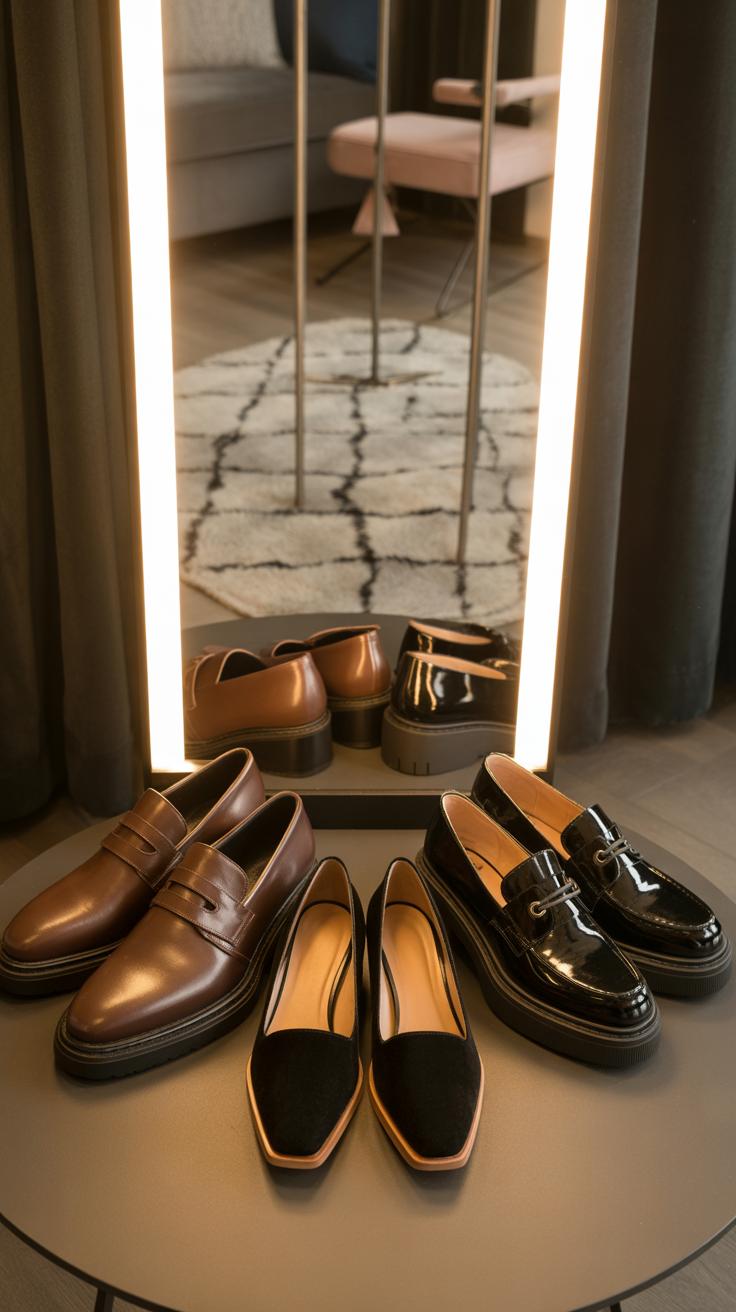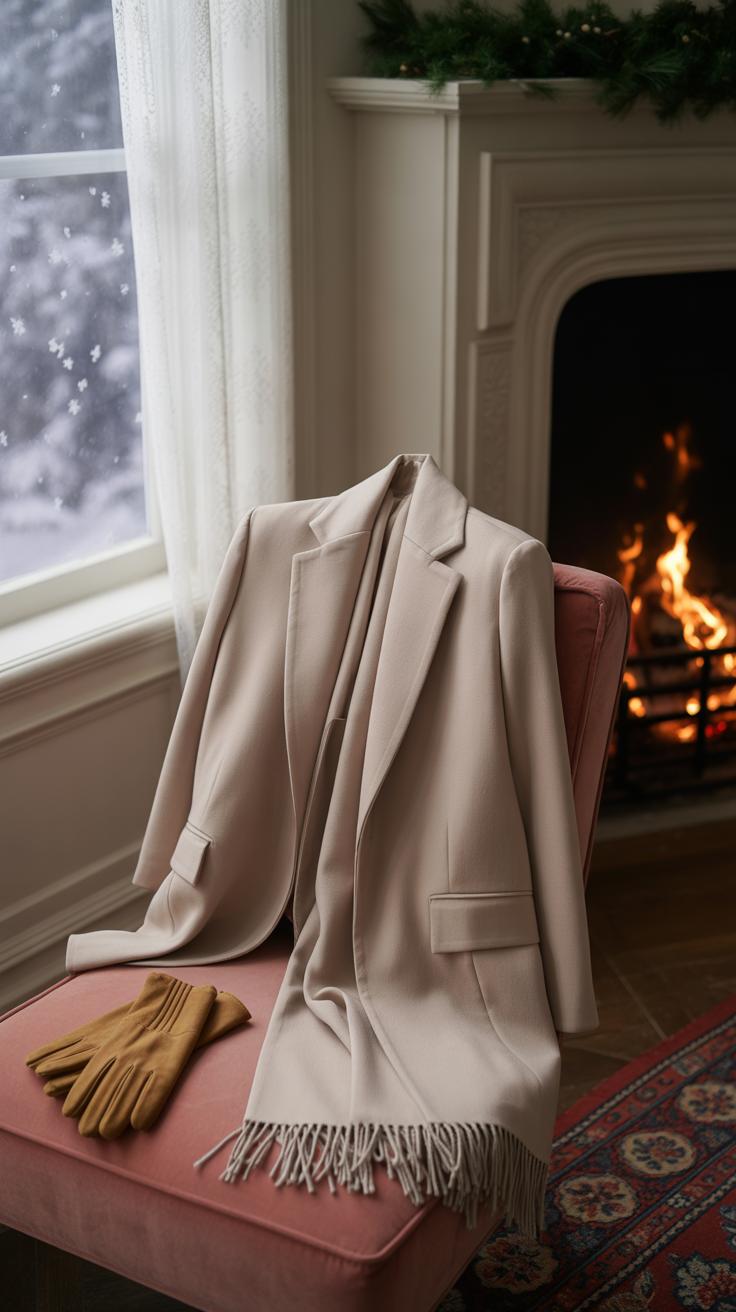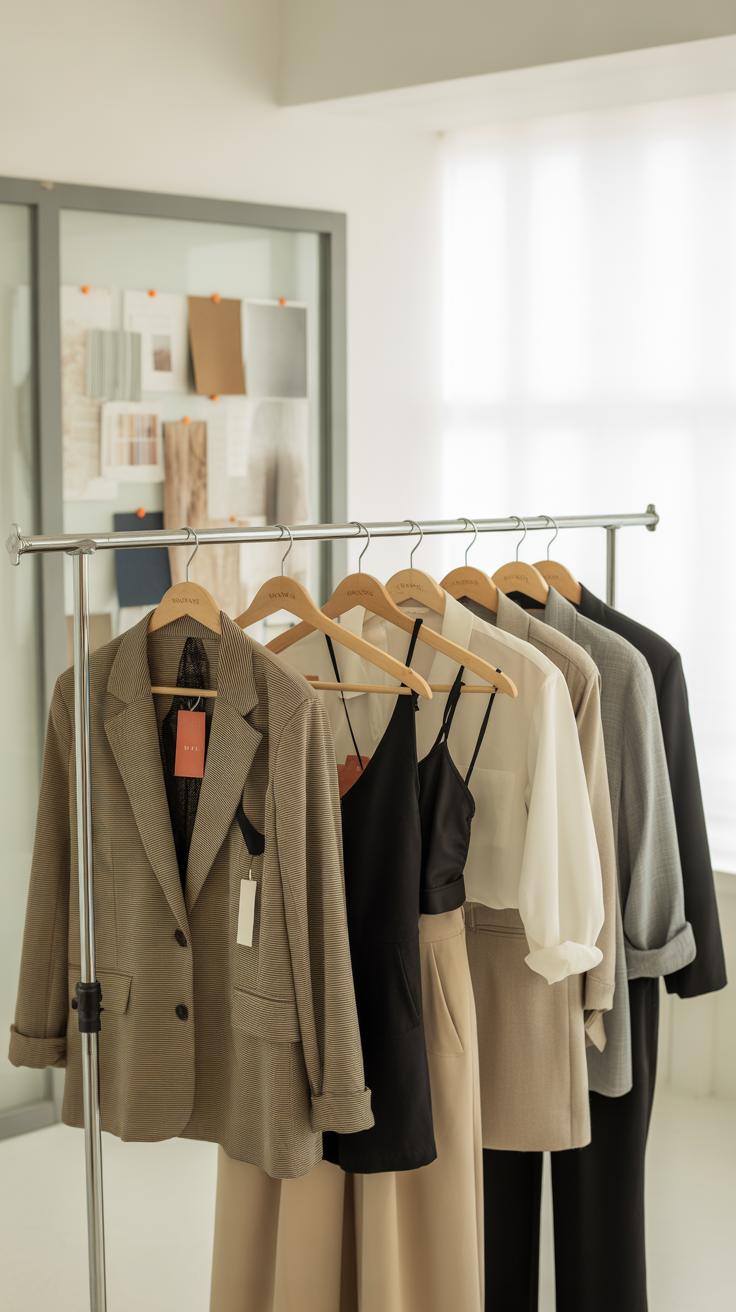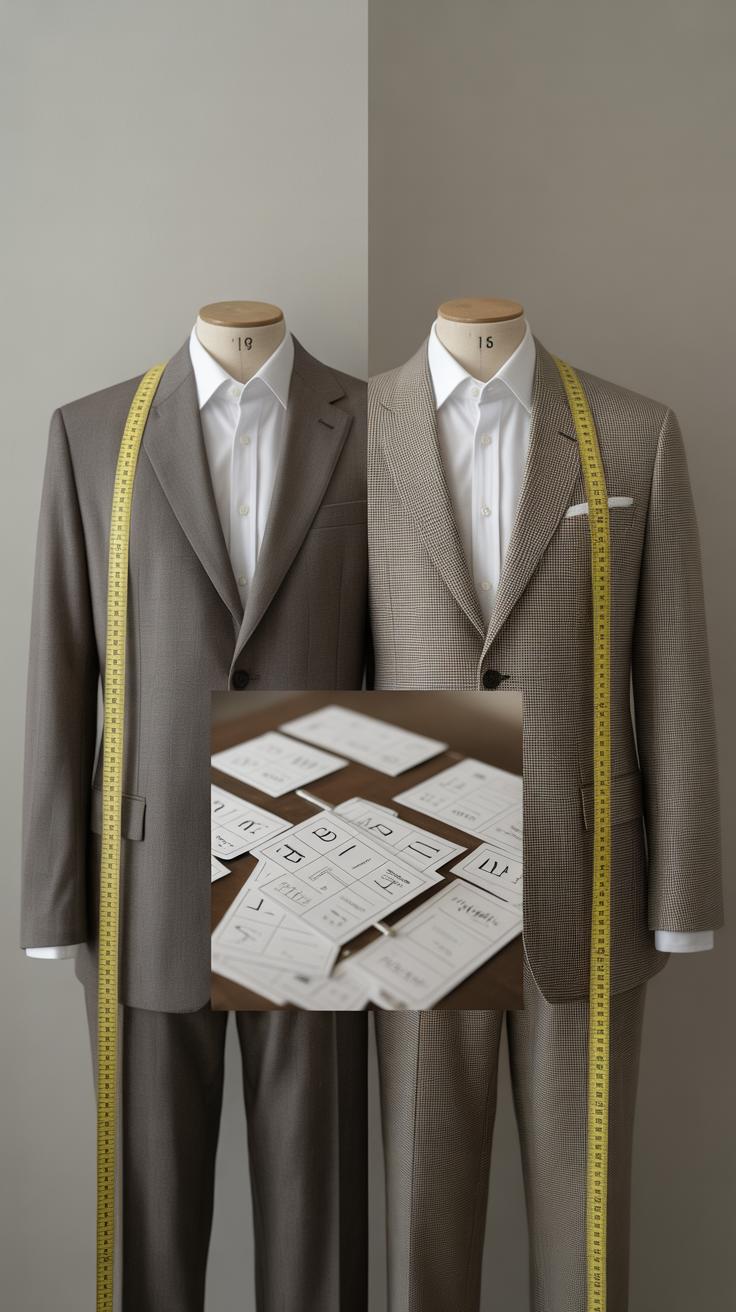Introduction
Cocktail attire fits between casual and formal dress. Knowing what to wear can help you feel confident at social and business events. The dress code has roots in tradition but also adapts to today’s styles. You will find this code typical for many late afternoon and evening events. Understanding both men’s and women’s options can prepare your wardrobe for multiple occasions.
Learning the essentials ensures you do not over or under dress. Choose pieces that suit your style and fit the occasion. Accessories and details enhance your look while remaining tasteful. This guide explores the basics, practical tips, and ideas to help you assemble a functional and stylish cocktail wardrobe. What should you add to your closet to meet cocktail attire standards effectively?
Understanding Cocktail Attire
Cocktail attire sits between casual and formal dress codes. It demands more polish than casual wear but less formality than black-tie events. This dress code suits evening gatherings, business mixers, weddings, and parties. It signals respect for the occasion without appearing overdressed.
The concept asks you to balance style and comfort. Men might choose a tailored suit without a tie, while women might wear a dress that’s elegant but not floor-length. The goal is to look sharp and appropriate without trying too hard.
Following cocktail attire helps you fit in and avoid standing out for the wrong reasons. It shows that you understand the event’s tone and respect its hosts. In professional settings, it also strengthens your image and builds confidence during networking.
Ask yourself what impression you want to make. Would dressing too casually or too formally distract from your message? Sticking to cocktail attire ensures you strike the right note every time.
History and Definition of Cocktail Attire
The idea of cocktail attire began in the early 20th century. It emerged in the 1920s as a way for men to dress up for after-work drinks without wearing full formalwear. The style mixed smart tailoring with relaxed details.
Women embraced cocktail attire soon after, wearing dresses that were shorter than formal gowns but still stylish enough for evening occasions. These outfits bridged late-afternoon and evening events, creating a new category of semi-formal wear.
Over time, cocktail attire became a standard dress code for business parties, weddings, and upscale social events. Its flexibility allows different cultures and fashions to blend into the look while keeping the core idea intact.
Today, cocktail attire continues to define many events. It guides you on what to wear when you want to appear polished but not formal. Understanding its history helps you appreciate its purpose and adapt it to your style.
Why Cocktail Attire Matters
Wearing cocktail attire improves how others see you in social and business settings. It signals respect for the event and those hosting it. People naturally respond better when you dress appropriately.
Cocktail attire also boosts your confidence. When you know you look right for an occasion, you engage more comfortably and boldly. That can open doors to new opportunities and connections.
Ignoring dress codes risks embarrassment or awkwardness. You might feel out of place or distract others depending on your outfit. Staying within cocktail attire shows that you pay attention to details and value shared expectations.
Think about events you attended where the dress code was unclear. How did your outfit affect your experience? Following cocktail attire removes guesswork, making your presence a positive part of the occasion.
Key Wardrobe Essentials for Men
Choosing the right pieces for cocktail attire means focusing on fit, fabric, and subtle style. Start with a well-tailored suit that fits your body shape closely but comfortably. Slim or modern cuts work best for a sharp look. Navy, charcoal, and deep gray are safe color choices. They suit most occasions and mix easily with other elements in your wardrobe. Consider lightweight wool or wool-blend fabrics. These breathe well and maintain structure throughout the event.
Shirts should be crisp and simple. Solid white or light blue shirts always look clean and polished. Cotton fabrics provide breathability and ensure comfort during longer events. Avoid heavy patterns or loud colors that distract from the overall look. Remember, cocktail attire sits between casual and formal, so your suit and shirt should feel refined but not overly stiff.
Suits and Shirts for Cocktail Events
Select suits that reflect a semi-formal tone. Single-breasted jackets work well and match the smart yet relaxed mood of cocktail dress codes. Double vents at the back improve mobility and add style. Your shirt collar should fit neatly without gaps or pinching, creating a smooth line under the jacket. Fabric choice matters to stay comfortable; try lightweight wool or blends for breathability. Avoid shiny materials or overly casual knits. Look for subtle texture like twill or herringbone for a touch of interest without breaking dress code rules.
Fit is non-negotiable. Have your suit lightly altered if needed. A jacket that’s too loose or tight destroys the elegant effect. Sleeve length should show about half an inch of your shirt cuff. Pants should taper just enough to skim your shoes without bunching.
Shoes and Accessories
Footwear completes your cocktail look. Choose leather lace-up shoes like oxfords or brogues in black or dark brown. These styles complement suits without appearing too formal. Avoid sneakers or casual boots as they clash with the dress code.
For accessories, keep things minimal but intentional. A slim leather belt matching your shoe color solidifies your look. Watches with simple faces and metal or leather bands work best. Ties should be silk or fine wool in solid colors or subtle patterns. Skip loud prints or novelty ties. Pocket squares offer extra polish but stick to classic folds and coordinating colors.
Each accessory should enhance your outfit instead of overpowering it. Think about balance and harmony rather than flashy additions. How will the colors and textures work together? Testing combinations in front of a mirror can reveal what looks right before the event.
Key Wardrobe Essentials for Women
Your cocktail wardrobe needs pieces that blend style and function. Start with versatile cocktail dresses designed to suit your lifestyle and personal taste.
Choose colors that complement your skin tone and occasion. Classic shades like black, navy, and jewel tones offer flexibility, while brighter colors can add personality.
Lengths matter. Knee-length or slightly above-the-knee dresses work well for most cocktail events, balancing formality and ease of movement.
Fabrics like silk, satin, or crepe bring a polished look without sacrificing comfort. They also hold shape better through evening wear.
Consider mix-and-match items such as chic skirts and elegant tops. These allow creativity in your outfit choices, combining comfort with sophistication.
Select pieces that feel comfortable and make you confident. Would you rather invest in one perfect dress or build a small collection of interchangeable separates? Your answer shapes how functional your wardrobe becomes.
Types of Cocktail Dresses
Cocktail dresses come in various shapes to flatter distinct body types. A-line dresses highlight the waist and skim over hips, ideal for pear shapes.
Sheath dresses hug curves, suited for hourglass figures or those confident with their silhouette. Fit-and-flare designs add volume and balance proportions for rectangular or apple shapes.
Think about necklines too. V-necks elongate the upper body, while boat necks add elegance and frame the collarbone.
Fabric texture influences how a dress falls and feels. For formal events, smooth satin looks sharp; for casual cocktail hours, lace or jersey fabrics provide ease and softness.
Ask yourself how often you’ll wear a style. Does it work across different events, or is it limited to one setting? Choosing versatile styles saves wardrobe space and money.
Complementary Clothing Items and Fabrics
Skirts and tops expand your cocktail outfit options. Pencil skirts in structured fabrics offer a timeless look and match well with silky blouses.
Swirling skirts made of lightweight chiffon add movement and pair nicely with fitted tops. Choose fabrics like crepe or georgette that resist wrinkles and breathe well.
When picking tops, prioritize materials like satin or lightweight knits. These fabrics sit well under jackets or statement jewelry and elevate your ensemble.
Consider how pieces layer. Can a top pair with a skirt and also a pair of tailored pants? Flexibility in fabrics and shapes helps you adapt your outfit quickly.
Do your wardrobe pieces support different event moods, from after-work drinks to formal dinners? Choosing the right cotton blends and wrinkle-resistant fabrics makes dressing easier and more comfortable.
Accessorizing Your Cocktail Outfit
Accessories play a key role in cocktail attire. They bring personality and polish to your look without stealing the spotlight. The goal is to find pieces that lift your outfit and keep it balanced.
Think about how a watch or a necklace complements your dress or suit color and style. Avoid anything too flashy unless the outfit is very simple. Accessories should enhance, not overpower.
How much is too much? That depends on your outfit and the event’s tone. A subtle chain or a classic timepiece often works better than oversized or overly bright additions. Your accessories create cohesion, so choose thoughtfully and with intention.
Choosing Jewelry and Watches
Lean toward clean, elegant jewelry for cocktail events. Simple stud earrings or a thin bracelet add sophistication without distraction. Men can consider a sleek metal watch or classic leather band.
Avoid heavy or chunky pieces that clash with refined cocktail attire. One or two jewelry items usually suffice. Think about pairing a delicate necklace with small earrings or wearing just a watch to keep it simple.
Would your outfit work better with gold, silver, or muted tones? Match your metals to your outfit’s colors to create harmony. Jewelry should feel like a natural part of your overall style, not a separate statement.
Belts, Handbags and Other Accessories
Choose belts that define your waist but stay understated. Thin leather belts in neutral colors often work best. Men can select a belt that matches their shoes for a polished look.
Your handbag should be compact and elegant. Clutches or small crossbody bags in classic shades fit cocktail events well. Avoid big totes or casual bags that don’t align with the dress code.
Other useful accessories like scarves, cufflinks, or pocket squares can add subtle flair when chosen carefully. Ask yourself if each item adds function or refinement without stealing attention from your outfit itself.
Footwear that Completes the Look
Your shoes finish your cocktail outfit. They should match the tone of your attire and fit comfortably throughout the event.
Look for high-quality materials like leather or suede. These allow your feet to breathe and keep your shoes looking sharp. Comfort matters. An uncomfortable shoe distracts you and shows in your posture.
Color plays a key role. For men, dark tones like black or deep brown often work best with classic cocktail suits. Women can match shoe colors to their dresses or choose neutral shades like nude, black, or metallics, which complement many outfits.
Think about the venue and how much you will move. Are you standing for hours or sitting most of the time? Still, never sacrifice style completely for comfort—balance both.
Before your event, spend some time breaking in your shoes. This simple step prevents blisters and helps you feel confident while you enjoy yourself.
Men’s Shoes for Cocktail Events
Men should opt for leather dress shoes that blend well with their cocktail attire. Oxfords, brogues, and loafers are solid choices.
Oxfords offer a polished look with closed lacing, perfect for formal cocktail settings. Brogues add a bit of personality with decorative perforations but keep the classy feel. Loafers provide comfort but still look sharp when clean and polished.
Pay attention to shoe maintenance. Clean your shoes regularly with a leather cleaner and condition them to prevent cracks. Use shoe trees to keep the shape intact and polish them to maintain shine.
Choosing shoes in black or dark brown usually pairs best with navy, gray, and black suits. Remember how important the sole can be—leather soles often feel more formal than rubber ones, which suit less formal events.
Women’s Footwear Choices
Women can choose from various shoe styles to suit cocktail attire. Classic pumps, strappy heels, and elegant flats each have their place.
Pumps with moderate heels combine style and comfort well. They match dresses and skirts effortlessly, especially in colors like black, nude, or metallics.
Strappy heels can add flair but need to feel secure and comfortable on your feet. Flats also work well for those who prioritize comfort without losing elegance, especially when decorated with refined details.
Consider materials such as leather and satin for a dressy appearance. Make sure the shoe’s color complements your outfit color and accessories without clashing. Try walking around your home before the event. This helps you test if the shoes will hold up during a night of mixing and mingling.
Seasonal Considerations in Cocktail Attire
Your cocktail wardrobe changes as the seasons shift. Warm weather calls for lighter fabrics and breathable materials. Cooler months need layers and thicker textures that keep you comfortable. Selecting the right fabrics and colors ensures you look sharp without sacrificing comfort.
For summer and spring, choose fabrics like linen, cotton blends, and lightweight silks. These breathe well and keep you cool. In contrast, fall and winter ask for wool, velvet, and heavier blends that offer warmth but still look polished. Layers such as tailored blazers or sleek scarves add both style and function during colder months.
Colors should reflect the feeling of each season. Lighter shades and pastels work well in warm weather. Rich tones like burgundy, navy, and forest green suit autumn and winter events better. Think about how your outfit can adapt. Would swapping out a jacket or changing your shoes make the outfit fit the season? Knowing these small tweaks will help you dress right for any cocktail occasion.
Dressing for Warm Seasons
When the temperature rises, the key is to stay cool without losing elegance. Opt for lightweight fabrics such as linen and cotton blends. These materials allow air to flow, preventing sweat marks and discomfort. Women’s dresses in soft pastels or floral prints brighten the mood and keep the look fresh. Men can choose lighter-colored suits in tan, light gray, or soft blue.
Avoid heavy knits or thick fabrics that trap heat. Instead, go for short sleeves or sleeveless options that are still formal enough for cocktail events. Breathable dress shirts for men help reduce perspiration. Think about accessories too—lighter shoes and minimal layers make a difference. What colors make you feel confident and cool in warm weather? Stick to those to stay comfortable and stylish all night.
Dressing for Cold Seasons
When the air turns crisp, layering becomes essential. Start with a base of quality wool or cashmere garments. Women might add a chic wrap or tailored coat over their dresses. Men benefit from layered dress shirts, vests, and structured blazers. These pieces trap heat but maintain a clean, polished silhouette suitable for cocktail settings.
Choose dark or deep colors to match the season’s mood: navy, black, deep green, and maroon work well. Don’t forget scarves and gloves in fine fabrics—these add both warmth and style. Consider your footwear too; leather shoes with good insulation keep feet warm without sacrificing sophistication. How can you add warmth without bulk? Thin layers and fitted outerwear will keep your look sharp and comfortable during colder cocktail events.
Mixing and Matching for Versatility
Building a Capsule Cocktail Wardrobe
Choose pieces that fit well and have simple designs. Think of a classic little black dress for women or a tailored navy blazer for men. These staples create a strong base for many outfits.
Focus on selecting items that complement each other. You want your jacket to pair easily with different shirts or blouses. Your shoes should work for several looks, not just one.
Limit your choices to versatile colors like black, navy, gray, and white. These shades mix easily and reduce clutter. Ask yourself if each piece can be worn in more than one way before buying it.
Include a few statement items, such as a textured skirt or a patterned tie, to keep outfits interesting. These should still coordinate well with your core items.
This approach helps you get dressed quickly and keeps your wardrobe manageable. You end up with more options without filling your closet.
Practical Mixing Tips
Pair solid colors with patterns to create balance. For example, wear a striped shirt with a solid jacket. This usually looks polished without overpowering your outfit.
Match fabrics by their weight and texture. Light cotton blends pair best with similarly light fabrics, while heavier wool or velvet feels right together.
Keep the overall style in one lane. If you choose a formal blazer, pair it with dress pants or a pencil skirt. Avoid mixing casual pieces like jeans with highly formal tops.
Consider color combinations that flatter you. Navy works well with burgundy or blush, while black pairs nicely with jewel tones or metallic accents.
Try changing accessories to shift your look. Swap a simple watch for a bold cuff or add a silk pocket square. These small tweaks refresh the same essential pieces.
Common Mistakes to Avoid
Choosing the right cocktail attire means avoiding some common errors that can ruin your look. Overdressing or underdressing is a frequent problem. How do you know the right balance? Check the event’s location and host for clues. A rooftop party may call for a lighter, stylish outfit, while a formal dinner leans toward traditional suits or dresses. Avoid wearing a tuxedo when a dark blazer would suffice, or sneakers when polished shoes are expected.
Fit and comfort make a bigger difference than many realize. Clothes that feel tight or stiff will distract you and lower your confidence. Think about how you move and sit in your outfit before the event. Tailoring may seem costly, but it pays off by ensuring your clothes look sharp and feel right. Ask yourself if you can relax and stay comfortable for several hours. If not, adjust the fit or choose different fabrics.
Maintaining Your Cocktail Attire
Keeping your cocktail attire in optimal shape helps you look polished every time. Regular care protects your investment and avoids last-minute wardrobe headaches. Pay close attention to how you clean and store each piece to extend its life.
After wearing, hang suits and dresses on sturdy hangers to maintain their shape. Avoid overcrowding in the closet to prevent wrinkles and fabric stress. Check your garments for small tears or loose threads right away and fix them before they worsen. A quick stitch or patch prolongs wear without the need for costly repairs later.
Consider rotating your outfits to reduce constant wear on favorite items. Are you storing seasonal pieces properly? Use breathable garment bags for delicate fabrics to protect from dust while allowing air circulation. Proper care prevents fading and fabric breakdown, keeping your cocktail essentials ready for your next event.
Cleaning and Storing Clothes
Follow garment labels closely for cleaning instructions. Wool suits often require dry cleaning to avoid shrinking or distortion. Silk dresses benefit from gentle hand washing or professional care to preserve their texture and color.
For cotton or polyester blends, machine washes on gentle cycles with cold water usually work well. Avoid drying them in high heat; instead, air dry or use a low-temperature setting.
Store items in a cool, dry place away from direct sunlight, which can cause fading. Use padded hangers for delicate fabrics to maintain structure and reduce creases. Fold heavier knits to avoid stretching. Do you check your clothes before storage for stains? Cleaning stains early prevents permanent marks that ruin your garment.
Preserving Accessories and Shoes
Leather shoes require regular cleaning and conditioning. Wipe off dirt with a soft cloth after each use and apply a leather conditioner monthly to avoid cracking. Store shoes in shoe trees or stuff them with paper to hold their shape and absorb moisture.
Jewelry needs careful handling to prevent tarnish and scratches. Keep pieces separated in soft cloth pouches or lined boxes. Clean metals gently with a polishing cloth and avoid exposing them to perfumes or lotions, which can damage finishes.
Other accessories like belts and watches also benefit from cleaning and proper storage. Consider if your accessories’ materials have special care requirements. Could a small effort in maintenance save you replacement costs later? Caring for your accessories ensures they complement your look for years to come.
Conclusions
Building a cocktail wardrobe means selecting versatile pieces. These key staples offer both style and function for various occasions. Focusing on fit, fabric, and simplicity ensures a polished appearance. Your choices should allow for mixing and matching to maximize use. Also, consider the season and your personal taste when choosing colors and designs.
Completing your look with the right accessories and footwear is important. Confidence in your outfit supports positive impressions. Cocktail attire is flexible yet signals respect for the event’s tone. Are you ready to refine your wardrobe with essentials that serve style and purpose? Taking these steps helps you dress well, feel comfortable, and enjoy your social experiences fully.


